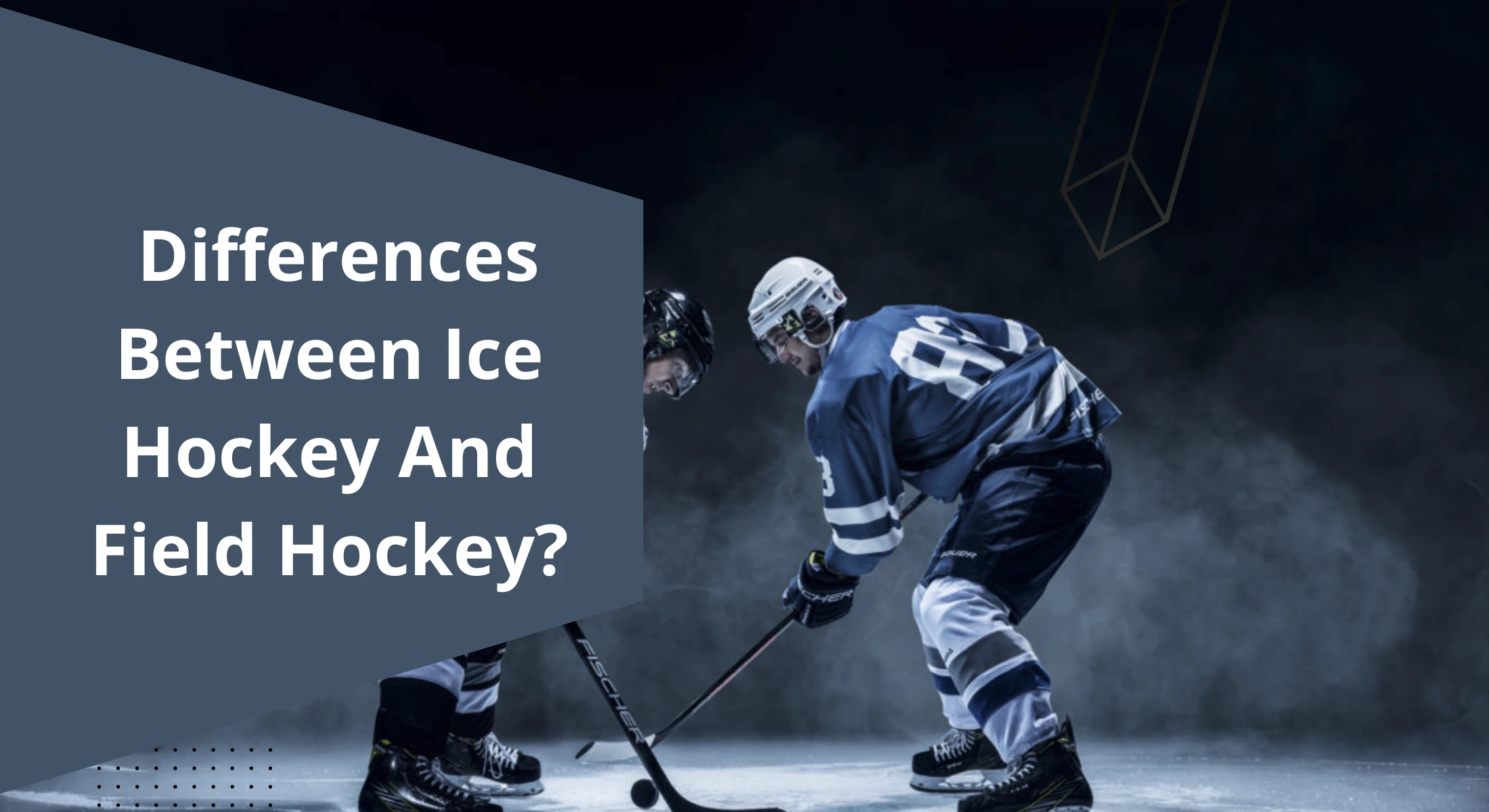What comes to your mind when you hear the term hockey? You might imagine either ice hockey or field hockey. But it is all based on where you are. If you are from Canada, the United States, Sweden, or Eastern Europe, you might think about ice hockey. But you will think about field hockey if you are from hot weather areas like central and southern Europe, Australia, or India.
What is the distinction when it comes to Ice hockey vs field hockey? In both cases, the goal of the game is to win more points against the opposite side of the squad. The number of individuals on a squad, scoring, penalties and violations, the ground and area of the playground, the game’s framework, and stick holding are all different between ice hockey and field hockey.
To know other differences between ice and field hockey, don’t stop here. You must keep reading it below!
What is the difference between ice hockey and field hockey?
For some people, the only difference between ice hockey and field hockey is the type of field. Thus, both of these games require a different set of abilities and strategies. The ability to handle the pole plays a major part in learning both of them at the same time.
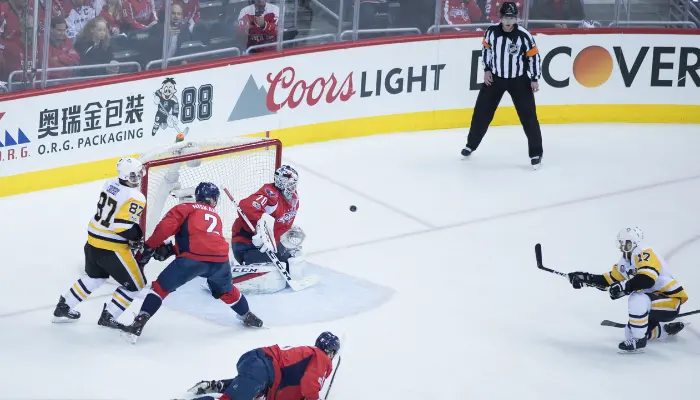
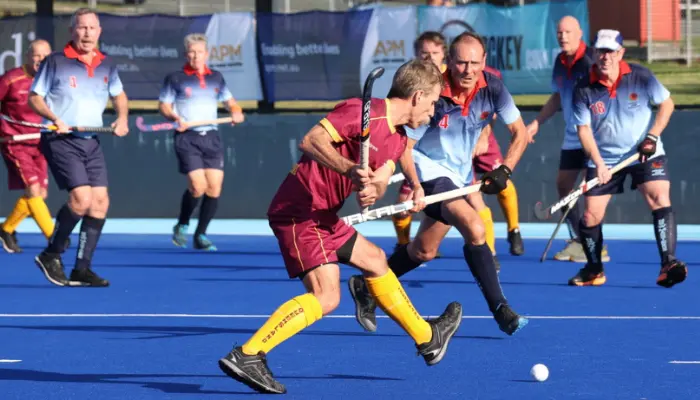
Additionally, the popularity of this game is growing daily. You must know that there are more than 70 countries that play hockey.
Professional skaters also have to spend more money on quality padding, helmets, and other sports gear. It is because sometimes this sport can become terrible. Below I am going to describe the major differences between ice hockey and field hockey:
You can also read this article: Who Scored The Most Goals In A Single NHL Hockey Game?
1: Playing Surface
One team plays on the ground while the other team performs on ice. It is the major distinction between ice hockey and field hockey. The amazing element is that both squads want a ground that helps to move the ball quickly.
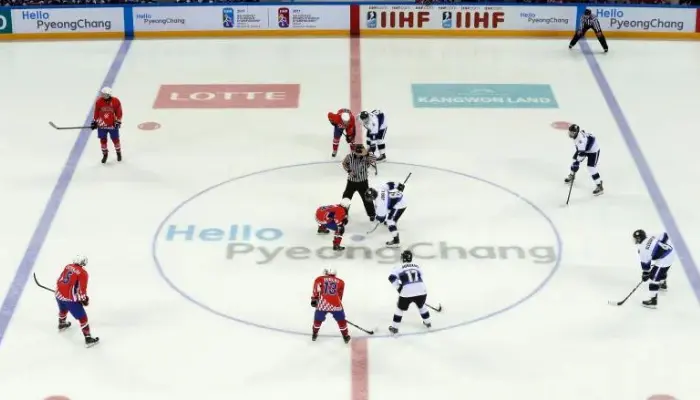
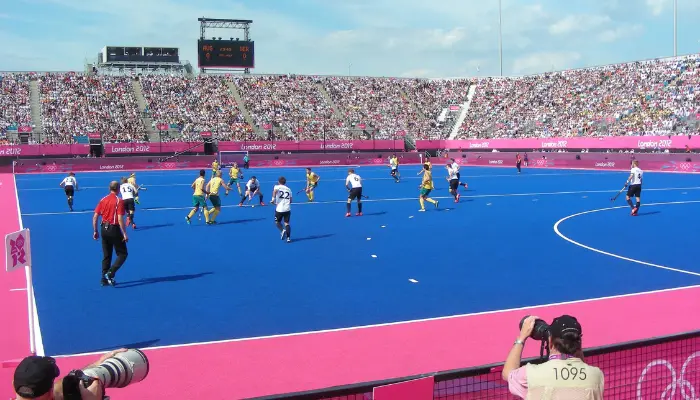
Ice hockey players sometimes complain about the bouncing or difficult-to-move ball. It is caused by bad ice because of seasonal snow.
On the other hand, field hockey players chose artificial turf with a water bottom. It is because the puck can move much more rapidly than on a surface with black rocks. Thus, the black stones can slow the ball’s motion.
2: Number of Players
The number of players on a field hockey team is higher than that on ice hockey. There are 11 players on a field hockey team including the goaltender, 3 defenders, 4 midfielders, and 3 forwards. Ice hockey only has 6 players on each team. 1 goaltender, 2 defensemen, and 3 attackers are all included in ice hockey.
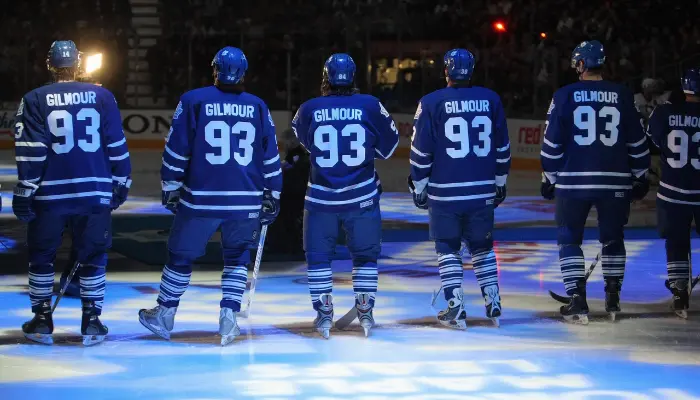
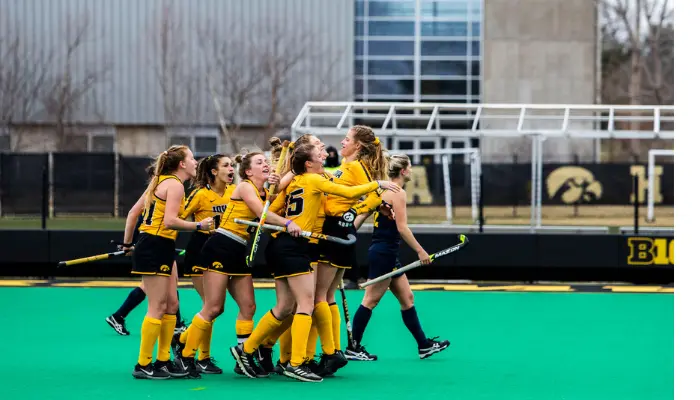
3: Structure of the game
In field hockey, a match lasts 70 minutes in total, with the initial part and the second part. Both the starting and ending parts last 35 minutes. In some uncommon circumstances, a field hockey match will be completed in 60 minutes. It will be broken into two halves of 35 minutes for each part.

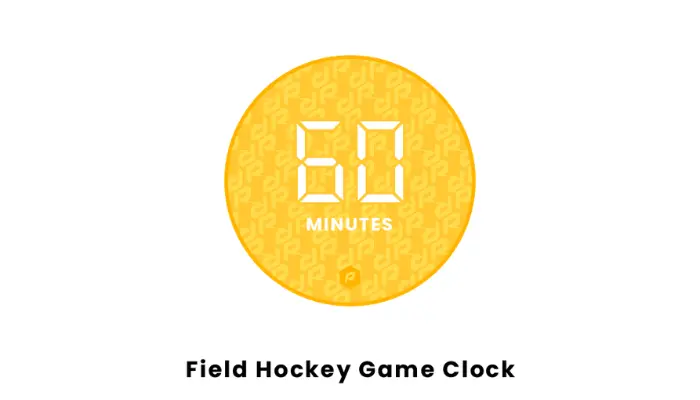
In ice hockey games, each period is three-quarters of 20 minutes long. This will make each match 60-minute long. On the other hand, ice hockey games don’t have two parts because the ice must be kept clean continuously.
4: Scoring
Where the skater is permitted to strike in each game is a key distinction between ice hockey and field hockey. In ice hockey, hitting anywhere on the rink is a good scoring area. Also, in ice hockey, it will matter how long the ball goes.
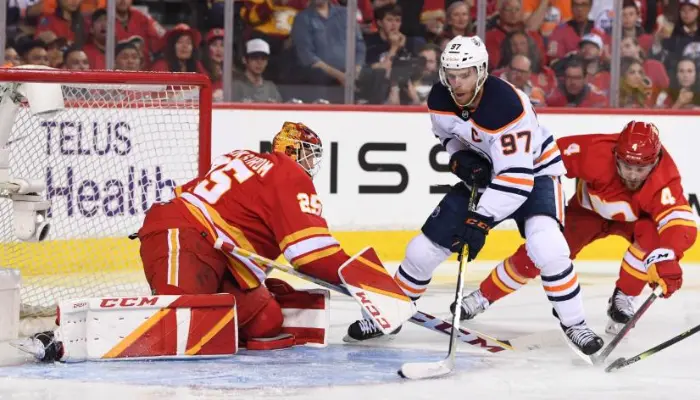
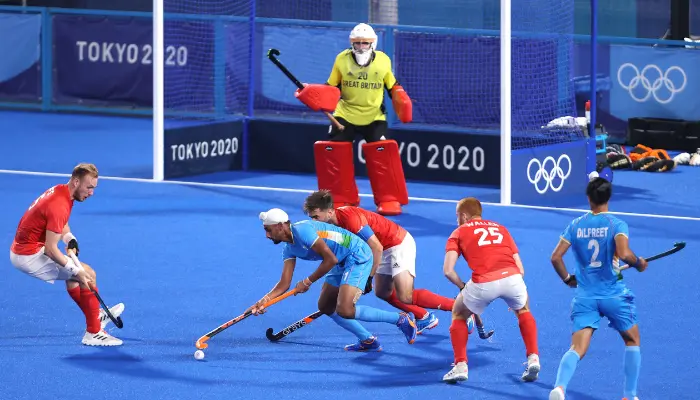
A player can only score in field hockey if the puck is hit from the D zone. The D zone is the semi-circle that is 15 M away from the target at its highest point. The score will not be considered successful if the ball is hit from another direction.
5: Offsides
Two wide blue markings in ice hockey are used to indicate an offside. A player is considered to be offside if he passes the blue line before the ball hits. The offside rule was created to promote passes in the match of ice hockey.
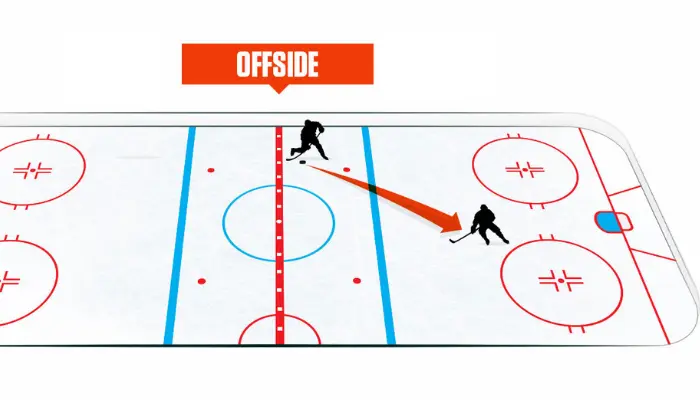
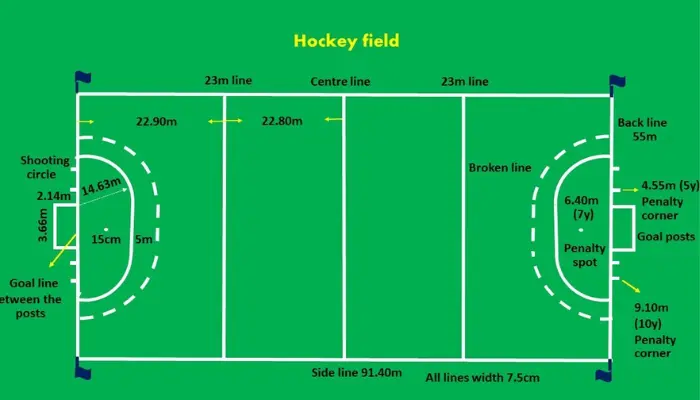
Whenever a player is adjudged offside, two things can take place. One is the defending player will win control back from the offensive team. The second is the match will be stopped by the umpire blowing his whistles.
On the other hand, field hockey does not have any offside regulations. You can win as a field hockey skater from any spot on the ground.
You can also read this article: How Long Do Hockey Players Stay On The Ice?
6: Stickhandling
In ice hockey, the player can use both the sides as front and back of the blades to move the puck. The front surface of the field hockey pole and the reverse curved edge combine the pole. Only the flat surface of the ball can be touched by a field hockey player.
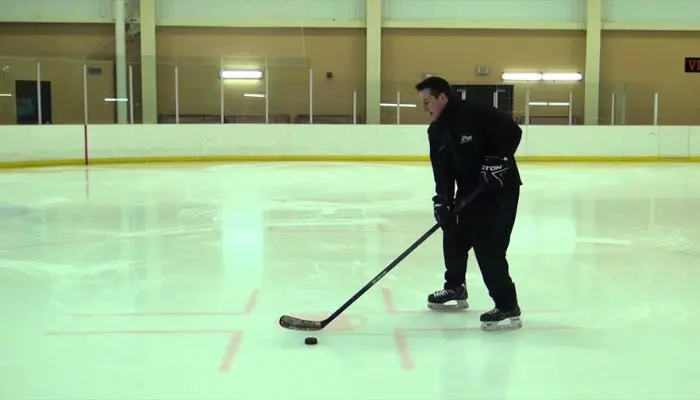
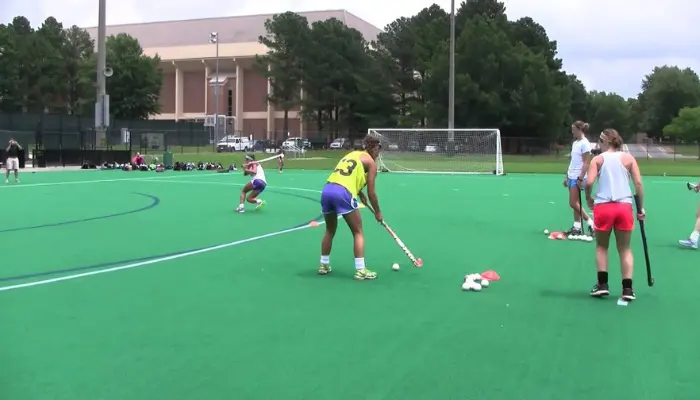
The field hockey skater uses a pole to control the ball, but their method is distinct. It is because it needs to rotate the pole cutter with the palms. In this way, the front side of the rod will touch the ball on both edges. In field hockey, utilizing the paddle’s curved surface causes the loss of the puck.
7: Goalies
Field hockey has fewer goal chances due to the limited scoring area. It has a save ratio of around 70%. Field hockey goalies utilize similar sticks to other teammates. But their protection isn’t as thick as it is in ice hockey. The goal’s cover is also much wider.
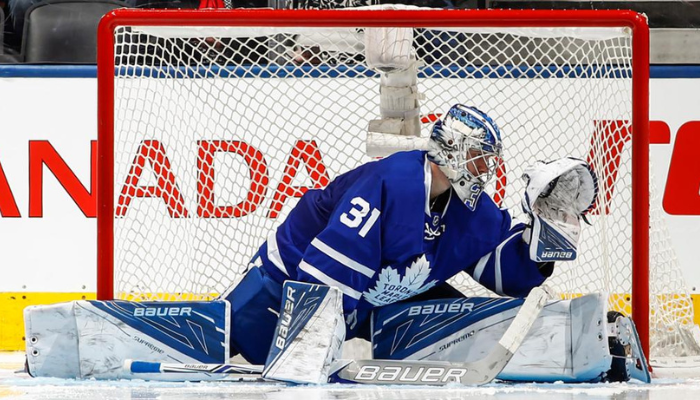

On the other hand, the goaltender in an ice hockey game will see a greater number of shots and has a save ratio of around 91.5%. Ice hockey goalkeepers have thicker padding and a shorter rink to protect. Ice hockey goaltenders also use a bigger pole with a separate bottom grip.
8: Fouls and Penalties
Here is a small list of the differences between what you can and cannot do in each of the sports.
1. Field Hockey
- If the puck touches your feet or body, the game will end and the opposition will take control.
- Your stick cannot be raised over your waist.
- You must address your attacker directly or shoulder to shoulder as you cannot handle them from the backside.
- Sticks are not allowed to touch your opponents.
2. Ice Hockey
- In ice hockey, the puck can touch your feet or body.
- The stick can be raised above your waist but it should not touch the neck of the opposite team.
- You can tackle the opposite team from the backside.
- Sticks are allowed to touch your opponents.
Fouls and Penalties in field hockey
Many fouls in field hockey allow the opposition team to take control of the ball. The opposite team will be given the chance to move the puck from the area of the foul for many of the obstacles. These obstacles include coming into contact with your pole. The player will be given a penalty for more serious fouls.
These fouls are broken down into three groups with increased penalties for each foul:
- Green Card: It allows you to leave the game for 2 minutes.
- Yellow Card: This is a 5-to-10-minute penalty off the field.
- Red Card: In this penalty, the player will be expelled from the game without a replacement.
Infractions and Penalties in ice hockey
If a player breaks a rule, there will be the following penalties as a result:
Non-Infraction Stoppage
The two most common non-infraction malfunctions are when a player crosses the blue line while offside and when a player freezes the ball. It means a player starts shooting the ball down the entire length of the rink. Thus, to begin the game, there is a face-off between the players rather than the opposing team gaining control of the puck.
Penalties
Penalties in hockey are divided into three categories:
- Minor Penalty: In this penalty, the player will have to leave the game for two minutes only.
- Major Penalty: In the major penalty, the player of the game will have to leave the match for five minutes.
- Misconduct: This can be of 10 minutes or sometimes, the player has to leave the entire match without any other condition.
9: Shooting
In ice hockey, the ball can go up in the air whenever and wherever the player wants. Thus, the ball will be thrown into the air independently. It does not matter whether a player is in the path of the shot or not. But the ball can strike skaters in the body and sometimes in the face.
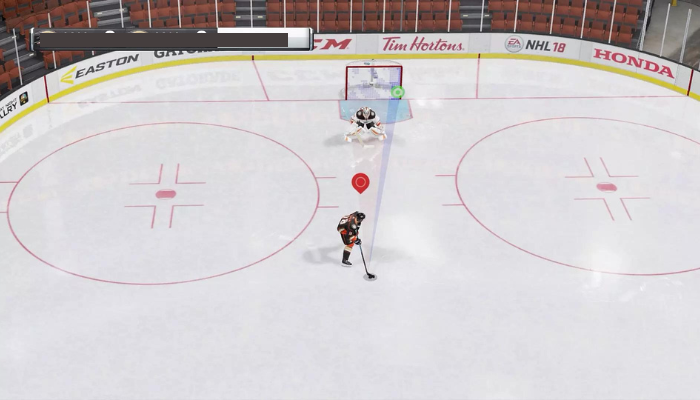

The puck cannot fly in field hockey, particularly on free hits. The only exemption is a shot on target. In this way, no one will be in danger and no one will be in the main direction of the ball.
10: Ties and overtime
Matches in international ice hockey do not conclude in ties. Instead of this, they proceed to extra time which lasts for five minutes. If the score is still tied, it will count as a playoff.
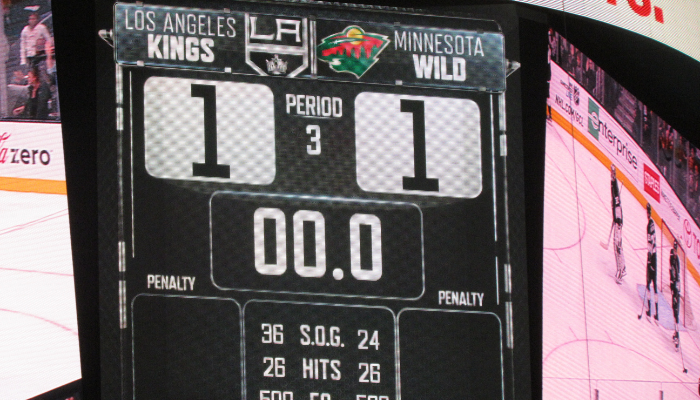
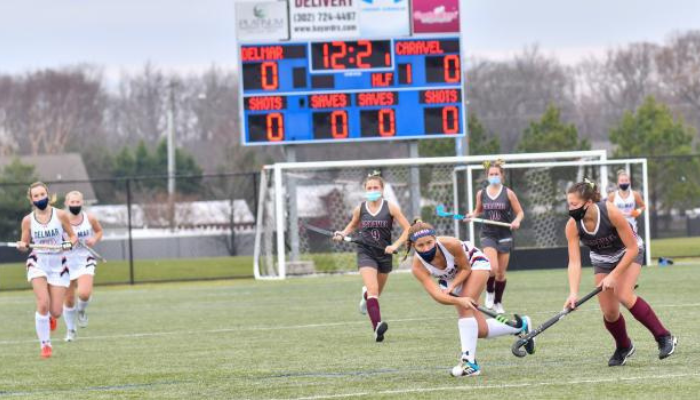
If the goal is still equal after three penalty kicks by each side, the shootout continues with single attackers. Games in recreational ice hockey will continue to finish in ties.
In field hockey, matches will still result in ties. But if they are in a competition, overtime and penalty kicks will be utilized.
Conclusion: Ice Hockey vs Field Hockey – What’s the difference?
What are the similarities and differences when you think about ice hockey vs field hockey? Ice hockey is more combative than field hockey, that’s why ice hockey is more challenging to play. Because both activities require striking a little ball using a pole, they will appear the same to a novice.

